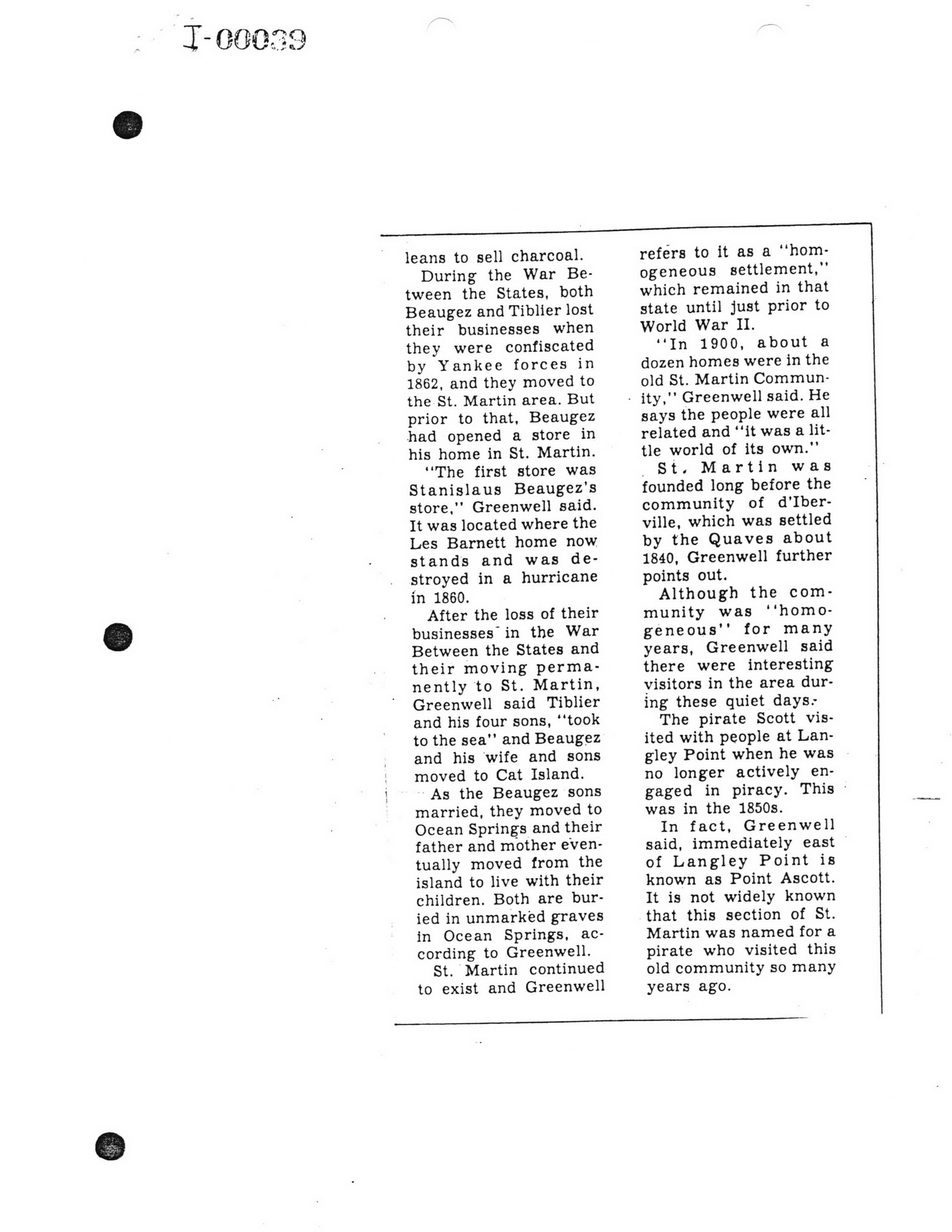This text was obtained via automated optical character recognition.
It has not been edited and may therefore contain several errors.
leans to sell charcoal. During the War Between the States, both Beaugez and Tiblier lost their businesses when they were confiscated by Yankee forces in 1862, and they moved to the St. Martin area. But prior to that, Beaugez had opened a store in his home in St. Martin. “The first store was Stanislaus Beaugez's store," Greenwell said. It was located where the Les Barnett home now stands and was destroyed in a hurricane in 1860. After the loss of their businesses' in the War Between the States and their moving permanently to St. Martin, Greenwell said Tiblier and his four sons, “took to the sea" and Beaugez and his wife and sons moved to Cat Island. As the Beaugez sons married, they moved to Ocean Springs and their father and mother eventually moved from the island to live with their children. Both are buried in unmarked graves in Ocean Springs, according to Greenwell. St. Martin continued to exist and Greenwell refers to it as a “homogeneous settlement," which remained in that state until just prior to World War II. “In 1900, about a dozen homes were in the old St. Martin Community,” Greenwell said. He says the people were all related and “it was a little world of its own." St. Martin was founded long before the community of d’Iberville, which was settled by the Quaves about 1840, Greenwell further points out. Although the community was “homogeneous” for many years, Greenwell said there were interesting visitors in the area during these quiet days.- The pirate Scott visited with people at Langley Point when he was no longer actively engaged in piracy. This was in the 1850s. In fact, Greenwell said, immediately east of Langley Point is known as Point Ascott. It is not widely known that this section of St. Martin was named for a pirate who visited this old community so many years ago.

Biloxi Document-(012)